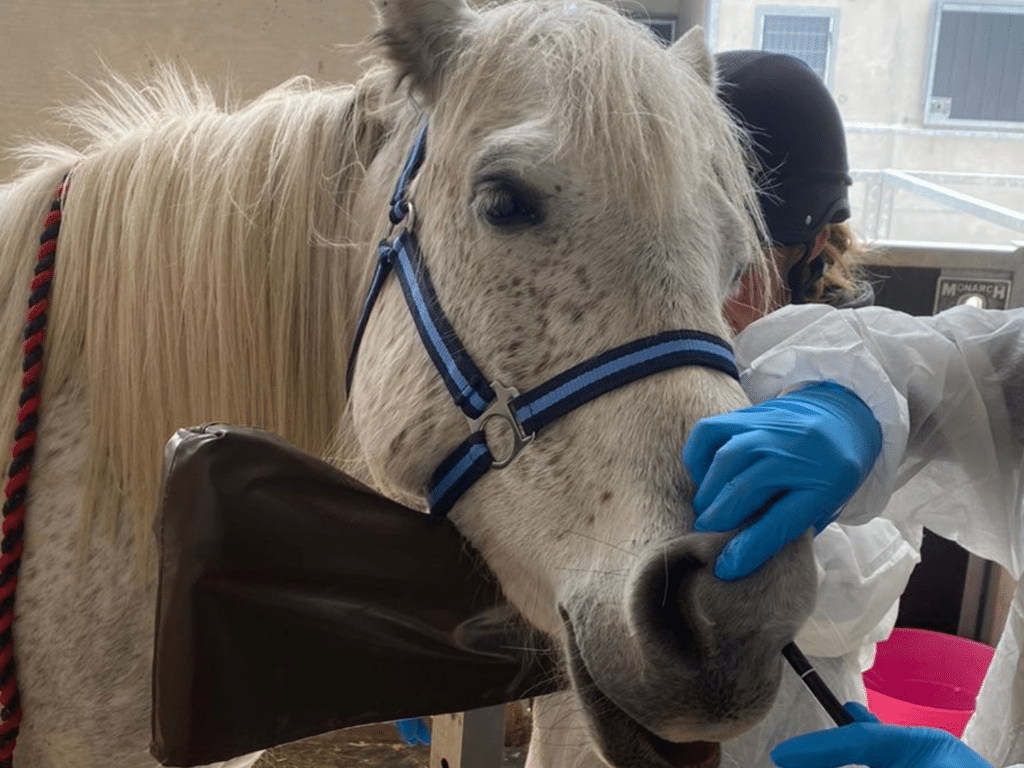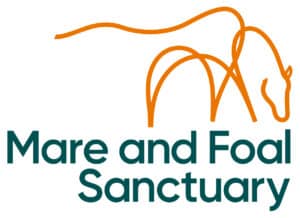
Managing strangles: Learning from the past to protect the future
In 2015 The Mare and Foal Sanctuary encountered a prolonged strangles outbreak. The outbreak lasted seven months, it had a profound effect on our ability to rescue horses and claimed the lives of four of our residents.
The lessons we learnt from 2015 have served to concrete our quarantine procedure and allow us to advise others based on our lived experience managing strangles.
Our strangles story
Strangles was identified in the resident herd at our Honeysuckle site in late April 2015. As a rescue centre admitting horses who often have an unknown veterinary history, quarantine has always been a priority. However, it wasn’t until the outbreak in 2015 that our quarantine procedures were tested and we learnt first-hand that you can never be too cautious when it comes to strangles prevention.
The week before the first positive strangles test the sanctuary had admitted six young cobs from a site in Somerset, where they had been abandoned on private land. At the same time one of our own ponies was returned from a loan home. All horses were stabled in our quarantine facility and tested for strangles using a strangles elisa test as soon as possible after arriving at the sanctuary. This test measures an immune response which shows whether the horse has had recent exposure to the disease. This test is thought to be 93% reliable.
It’s impossible to tell exactly which horse was the source of the strangles. However, it was clear that somewhere along the line, strangles had made its way from the new arrivals into our herd.
What came next was seven challenging months closely monitoring the outbreak under the guidance of vets and working towards a strangles free status. Thankfully, we had a plan in place for an outbreak and our knowledgeable staff immediately stepped into action. Disinfection stations were set up, the site and staff were split into designated zones and the horses into a traffic light system:
- red – horses showing clinical signs
- amber – horses that have been in direct or indirect contact with an infected horse
- green – horses that have not been in contact with an infected horse
Green horses were mainly left turned out with minimal human contact and the stables were used to nurse sick horses. However, because the sanctuary was over capacity due to a high number of recent rescue cases, stable space was an issue. We had to carefully monitor the movement of all horses on site. Our dedicated staff worked around the clock to care for horses and ponies. Although the situation was dire things could have been worse had we not had such detailed plans in place ready to be implemented at the first sign of disease.
The impact of strangles
The equines affected and their wellbeing was the number one priority. Heartbreakingly, four horses died as a result of the disease. It is a testament to our staff and vet team that more horses weren’t lost.
The disease also put a stop to any new intakes due to Honeysuckle housing our only quarantine facility and the other sites not being set up to take in new arrivals. This meant we weren’t able to take in new rescues. It also put a stop to rehoming from the site and training for horses that desperately needed it.
Staff wellbeing is something that is hard to measure, but caring for such sick horses undoubtedly took its toll. Head of Equine Welfare, Syra Bowden, reflected on the outbreak. “It was an incredibly difficult time for all the staff involved. The emotional impact of losing horses who you’ve fought so hard to save is huge. We love each and every horse in our care and, at the time, we didn’t know when we would be strangles free. We were living every animal lover’s worst nightmare.”
Thankfully, vets gave the horses at Honeysuckle the all-clear in October of 2015 and our normal work rescuing, rehabilitating and rehoming horses could resume. But, just as importantly, work began to ensure an outbreak of that magnitude didn’t happen again.
Making changes
The sanctuary has adapted and perfected our quarantine procedure based on the lessons learnt from the outbreak. We keep up to date with the latest developments within the veterinary sector. Improved quarantine facilities, which had been planned before the outbreak, were installed in mid-2016. The sanctuary implements guttural pouch washes and nasopharyngeal washing for all new admissions, in place of strangles elisa tests. Guttural pouch washes are the gold standard when it comes to strangles detection. This means that carrier animals can be detected before they entered the sanctuary herds and it reduces the number of sessions with vets taking blood and giving injections.
The Mare and Foal Sanctuary also champion education. As a part of the international Strangles Awareness Week campaign we support spreading awareness and opening up conversations about strangles prevention. We aim to share our hard-won knowledge with as many in the equine community as possible.
Preventing strangles
Preventing a strangles outbreak like the one The Mare and Foal Sanctuary had in 2015 is vital for the health of your own horses and the wider equine population.
Be aware of the symptoms of strangles and have a plan in place on your yard. These are the most important tools for minimising the risks.
Regular temperature checks are a key part of the Strangles Awareness Week message. Helping equines become comfortable with temperature checks and then fitting these checks into normal stable management routines can save lives. Join the temperature check challenge.
You can find out more about recognising and managing strangles on our strangles management advice page.



